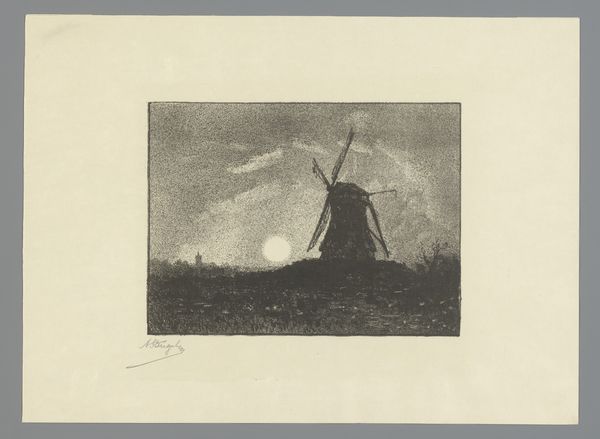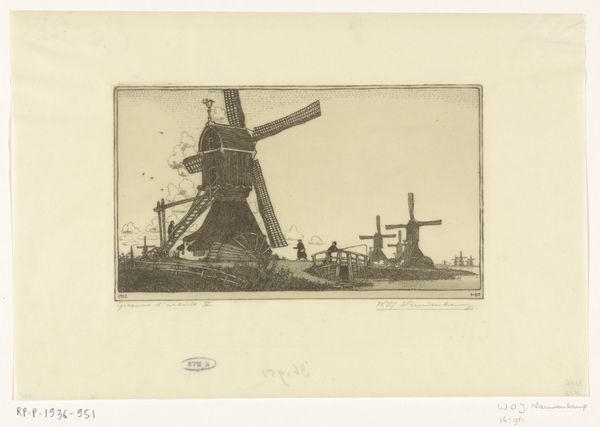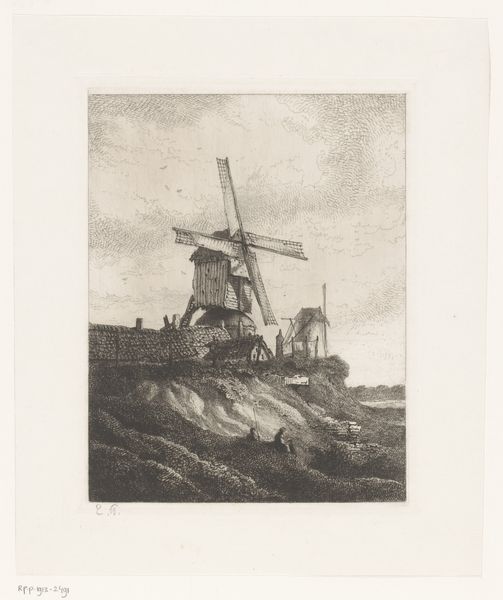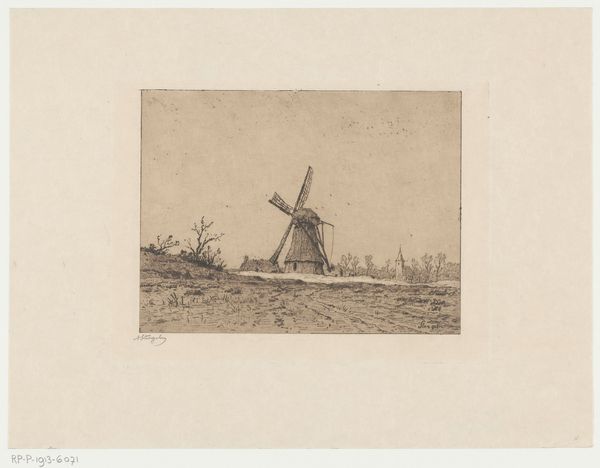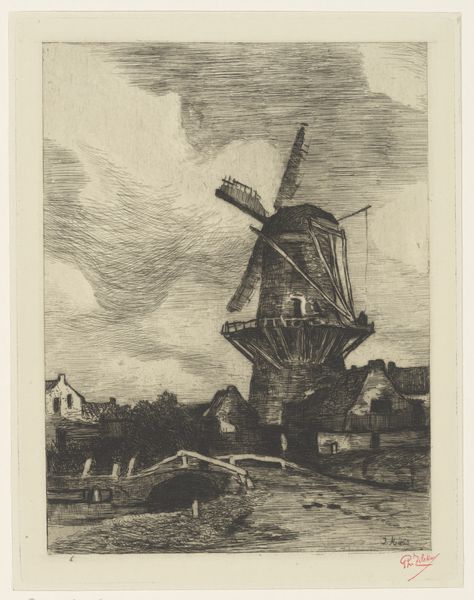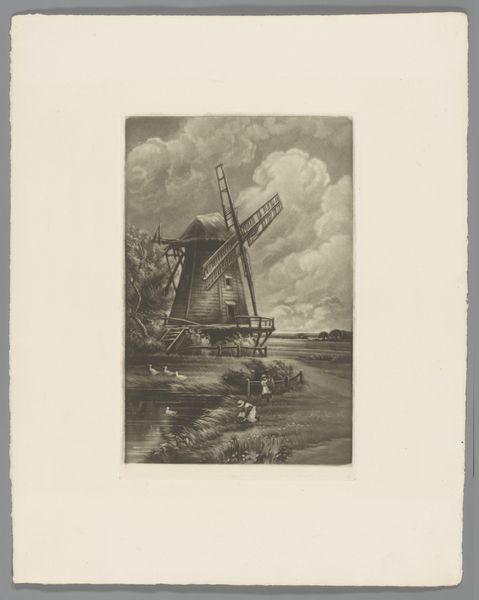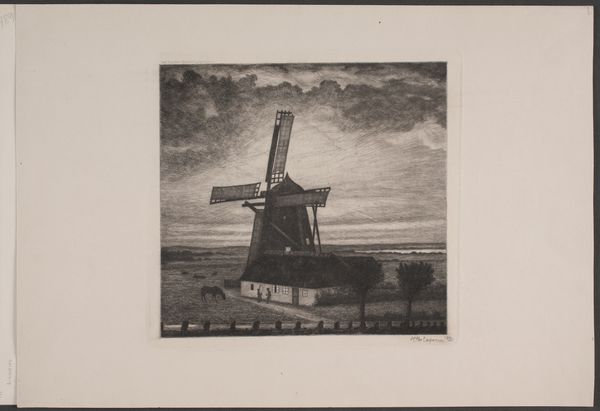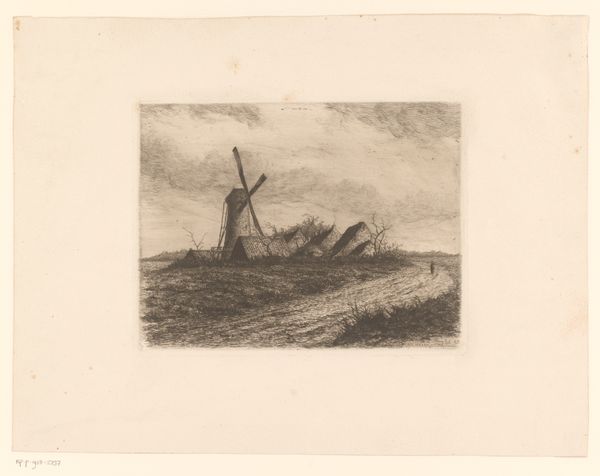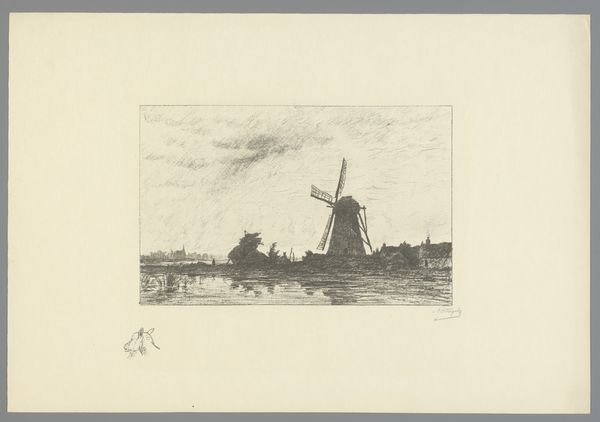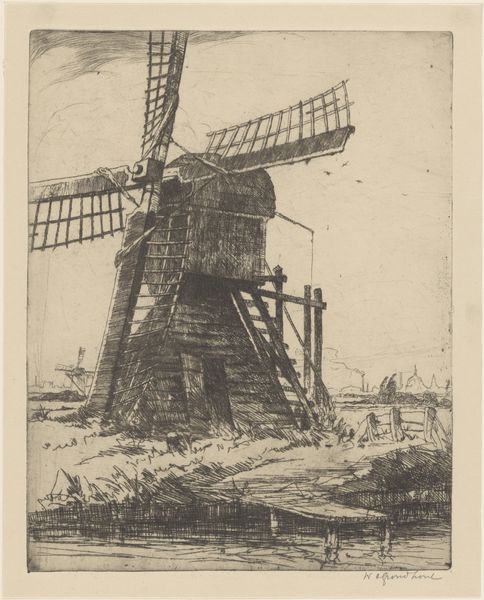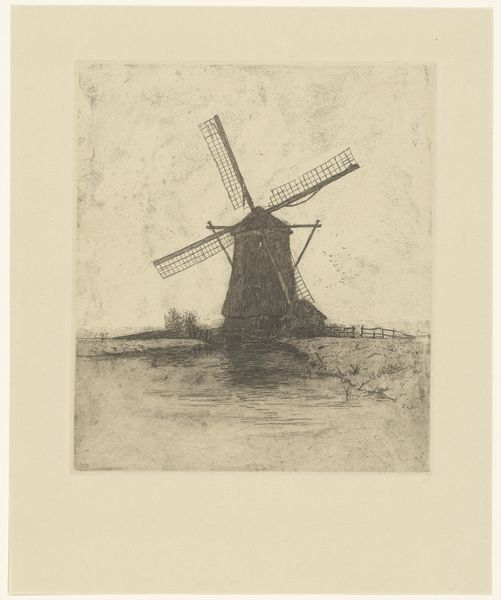
print, etching
#
dutch-golden-age
# print
#
etching
#
landscape
#
realism
Dimensions: height 299 mm, width 200 mm
Copyright: Rijks Museum: Open Domain
Curator: Standing before us is "Mill and Woman Washing" an etching crafted by Philip Zilcken in 1888. Editor: The muted tones and delicate lines evoke such a feeling of quiet solitude. The figure near the water, almost a shadow, creates a rather melancholic atmosphere against the imposing presence of the windmill. Curator: It is important to note Zilcken's positionality within Dutch society, class and gender roles within the cultural understanding of labor. Laundry, usually seen as domestic work performed by women, contrasts with the grand industrial symbolism of the mill. What statements can we make of women's work in the backdrop of growing industry? Editor: The windmill itself is heavy with symbolic meaning. In Dutch art, they can signify prosperity and progress, certainly, but also endurance and resistance to the elements, even liberation from Spanish rule. Seeing it in tandem with the washing woman could speak to perseverance amidst harsh conditions and to women providing support as integral members of that nation. Curator: That symbol then becomes deeply complicated by considering issues such as gender-based divisions of labor and the historical denial of resources based on ethnicity, gender, class and the implications within broader power structures. We can think through post-structuralist theory as a way of understanding meaning as relational rather than fixed or essential. How is woman washing symbolic within such context? Editor: And yet, that same image can offer layers of intimate meaning beyond the socio-political; the symbolism of water representing purification, of renewal... It brings us to core human experiences that perhaps these industrial advancements were supposedly working toward supporting. The way light catches her is remarkable as though an omen for promise. Curator: I concur; though these layers must then be analyzed using discourse analysis that unpacks their societal context and influence as such a scene reinforces gendered norms within production and consumption. That domestic setting plays against the vast agricultural backdrop. What type of message does it send in contrast with agricultural technologies? Editor: This piece truly exemplifies how visual culture can hold complex, often contradictory ideas and assumptions within what seems like such a simple landscape. Curator: Exactly, bringing art historical insight combined with theoretical frameworks brings nuanced, relevant interpretations for current audiences. Editor: Indeed; the personal and cultural converge here. A reminder of the potency held within the image, inviting an array of diverse readings through symbolism and personal perspectives.
Comments
No comments
Be the first to comment and join the conversation on the ultimate creative platform.

